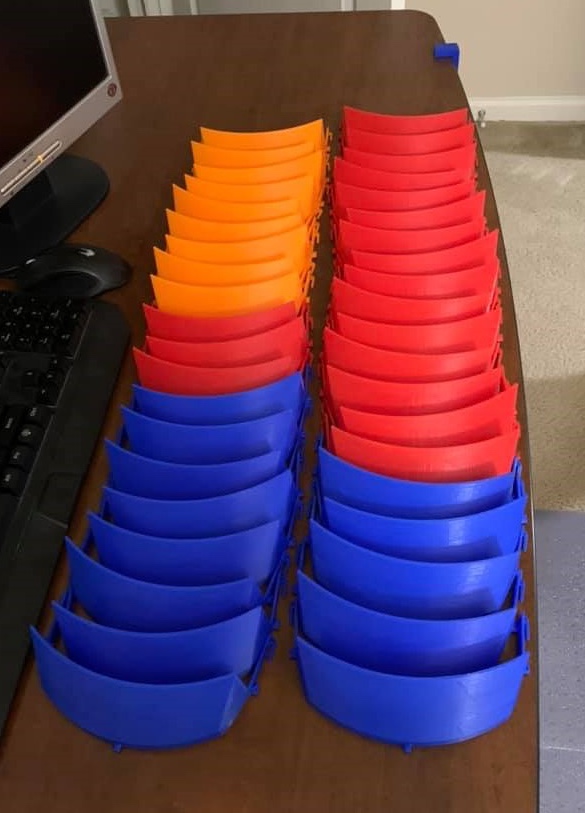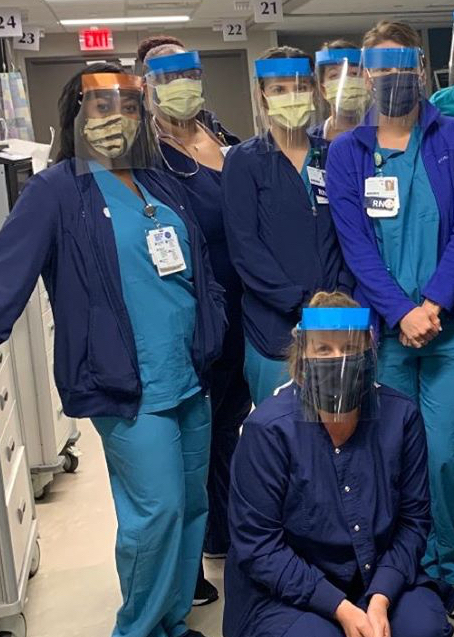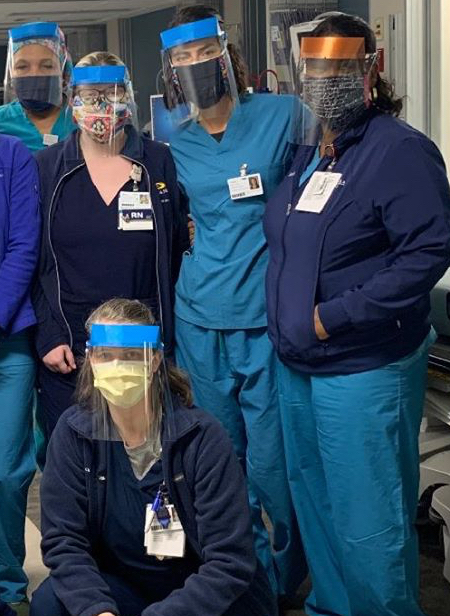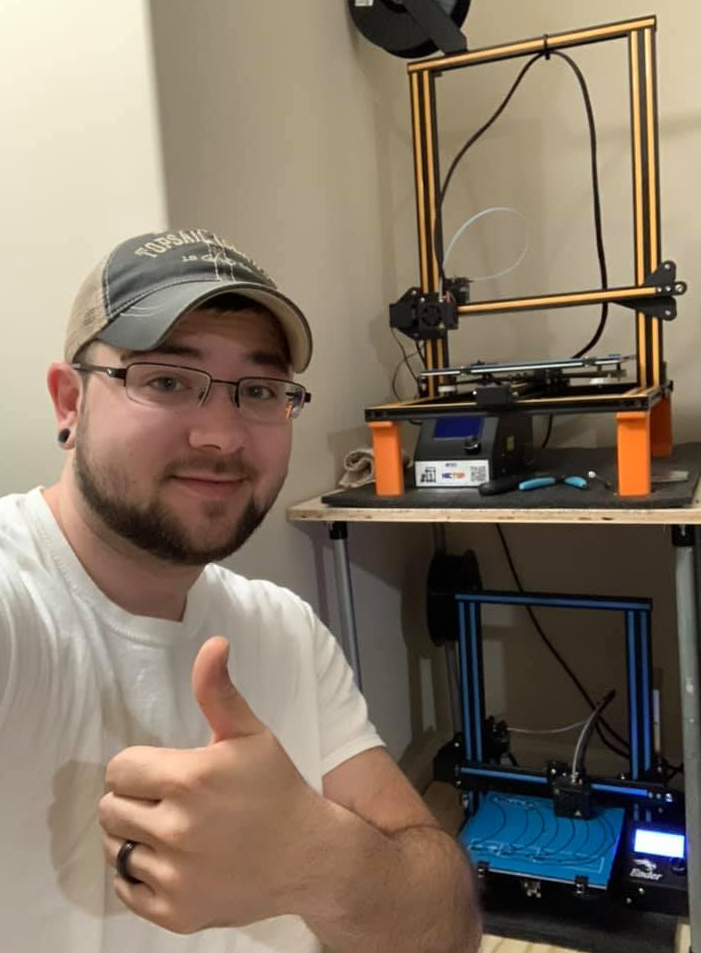This article is the fifth in a series of articles about members of the Jefferson Lab community who are using their personal time and expertise to help the local community in the face of the pandemic.
A mechanical designer and 3D-printing enthusiast joins efforts with local team to print face shields for frontline medical workers
Cameron Sutton has been 3D printing for nearly as long as 3D printers were available for at-home use. As a 3D-printing hobbyist, Sutton has made various creations for his home, such as a spice rack and badge holder for his father-in-law, complete with his company logo.
A mechanical designer at the Department of Energy’s Thomas Jefferson National Accelerator Facility, Sutton had even started his own Etsy store in his spare time through which he offered custom-printed lampshades called lithaphanes that work by printing a 3D replica of a photograph in the shape of a lampshade. As the light shines from a lightbulb, different thicknesses of the shade create an image.
Responding to the need
In March, when Sutton learned that frontline medical professionals were running low on personal protective equipment (PPE), he put his side-business on pause and began using his two 3D printers to make face shields. He joined a new group called #757Cares, which is a team of about thirty 3D-printing enthusiasts who are dedicated to helping the medical community by making the much-needed shields.
“I saw an opportunity to help,” he said. “I redirected my post-workday efforts away from running my shop and started using my printers full-time to print masks. If I can help somebody else out, that’s what matters to me.”
Sutton and the #757Cares team work together to collect materials, print, assemble and deliver the shields to any medical team that requests their help. The process has been customized to suit the needs of medical teams requesting the masks.
“This was designed by the crew,” he explains. “Once we had an initial design for the shields, a member of the #757cares group was responsible for redesigning the shields based on feedback from the requester.”
For example, the team learned that the face shield needed to be adjustable so that it could comfortably fit medical professionals with different head and face sizes. Medical professionals also wanted the shield to have a larger headpiece that would cover the hairline, thereby drastically reducing the number of particles that could fall behind the mask and onto the skin.
Printing, assembling and delivering around the clock
Since he began, Sutton’s efforts have continued non-stop for nearly eight weeks, during which time his home printers have been running practically around the clock, even overnight. In total, he has personally printed 200 masks, which he has added to the masks printed by others in the #757Cares group and donated to hospitals and medical facilities around the region.
Each mask takes approximately 60-80 minutes to print. Once the headpiece is printed, Sutton delivers them to a designated member of the group who then does the assembly work. First, a pre-formed clear face shield is attached to the headpiece. Then, a paracord is added to the headpiece with a 3D-printed toggle that will enable medical professionals to secure the face shields comfortably to their heads.
Each mask costs approximately $3 to produce, with the majority of that expense coming from the purchase of the clear face shield that attaches to the 3D printed headpiece. The group is using donated filament and paying out-of-pocket to print, assemble and deliver the masks to any group that asks for help.
“I plan to continue printing the masks as long as we are getting orders from medical workers,” Sutton says. “We have a spreadsheet set up, so we know how many shields a group wants. We print those orders and send them to the recipient within about 10 days from the time they order. I think we have around 600 left from our current orders, and we should have those done next week.”
Sutton reports that the newest orders are coming from dental offices across the region, now that many are re-opening.
For more information about #757Cares or to get involved, visit #757Cares on Facebook.
Other articles in this series:
Making a Difference One Mask at a Time
Thinking Inside the Box Can Save Lives
Helping Others Through Thoughtful Donations
Supporting Pandemic Efforts Through Logistics and Legwork
Contact: Lauren Hansen, Jefferson Lab Communications Office, 757-269-7689, lhansen@jlab.org





